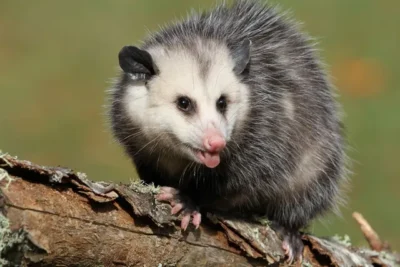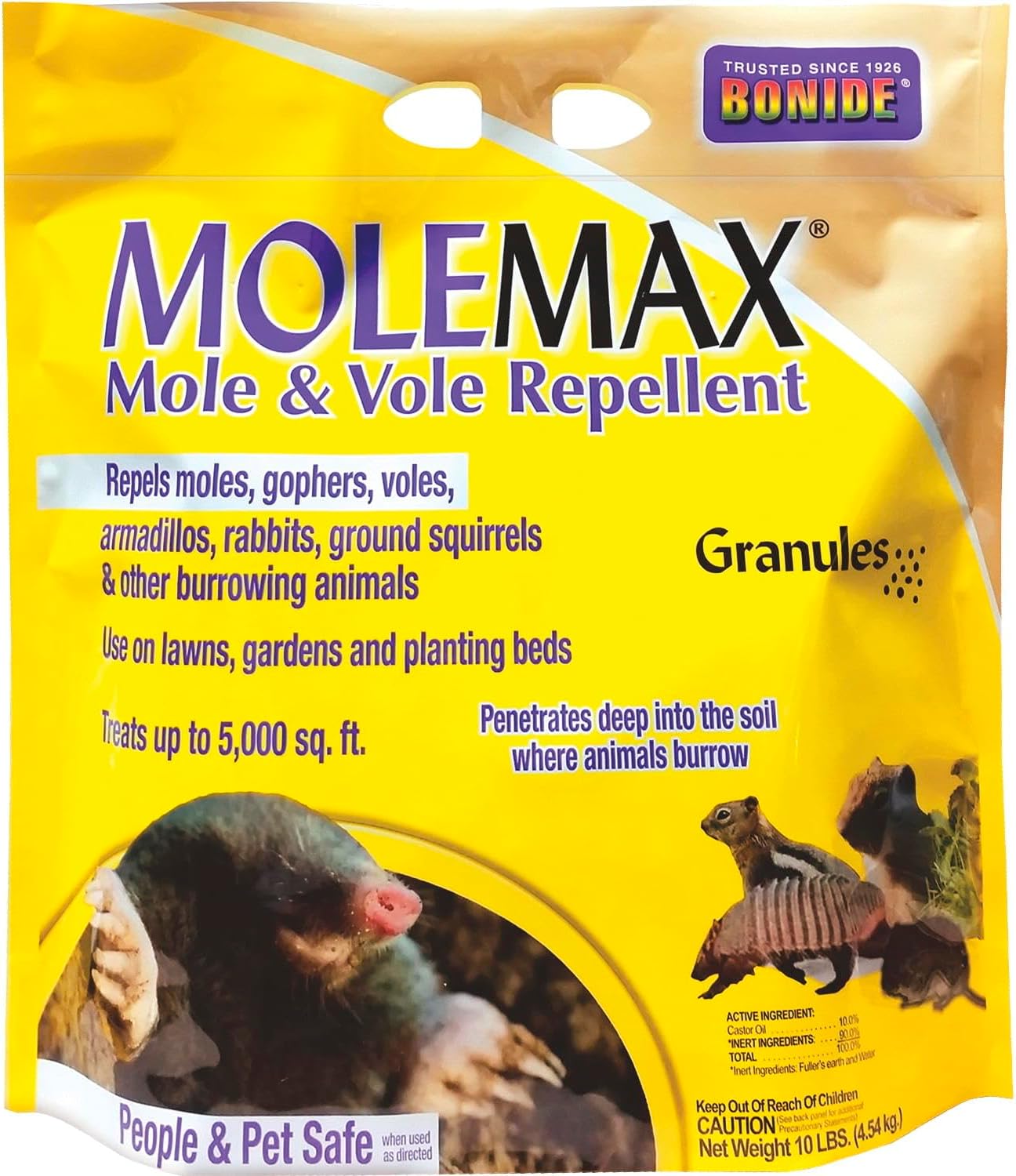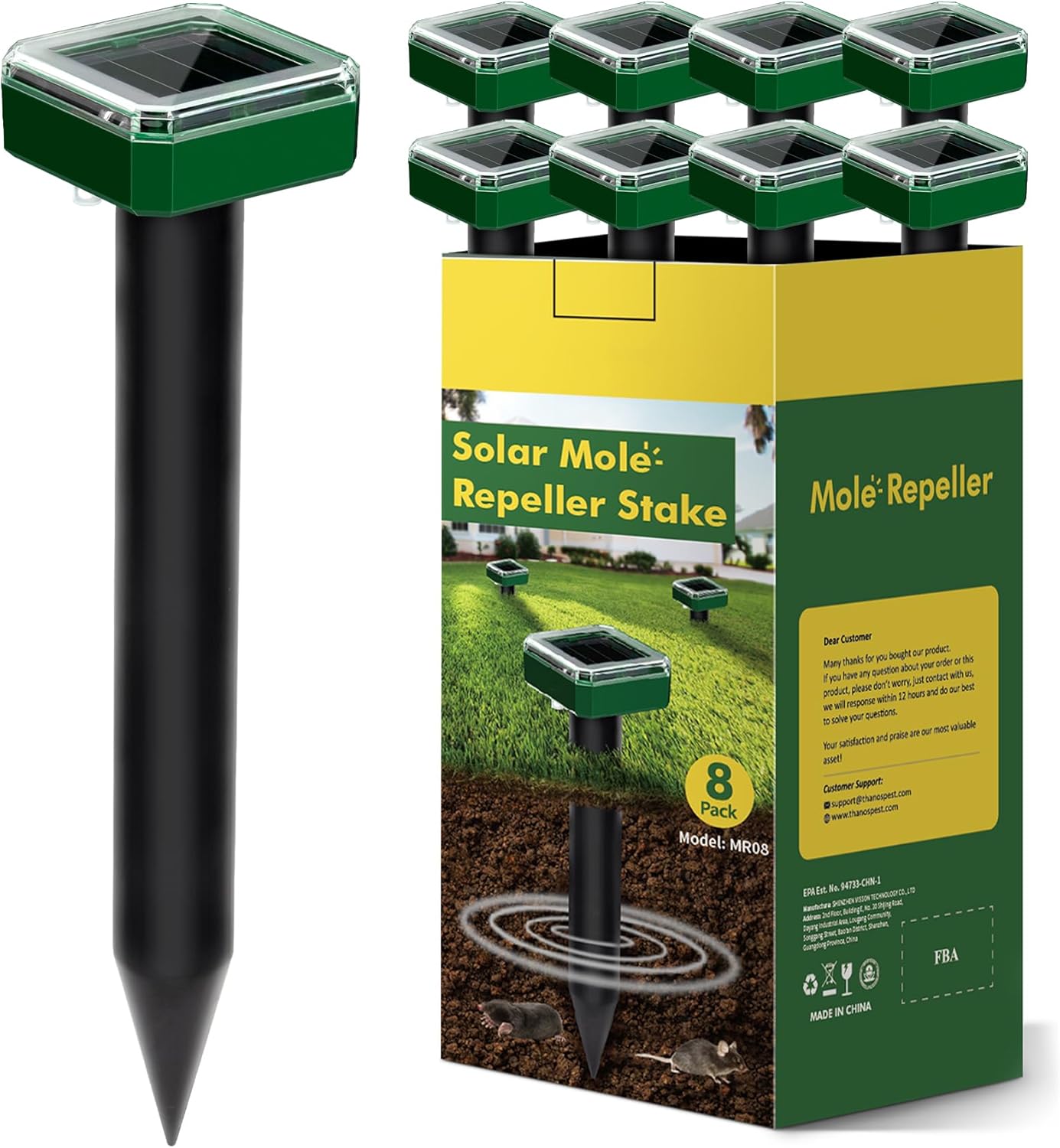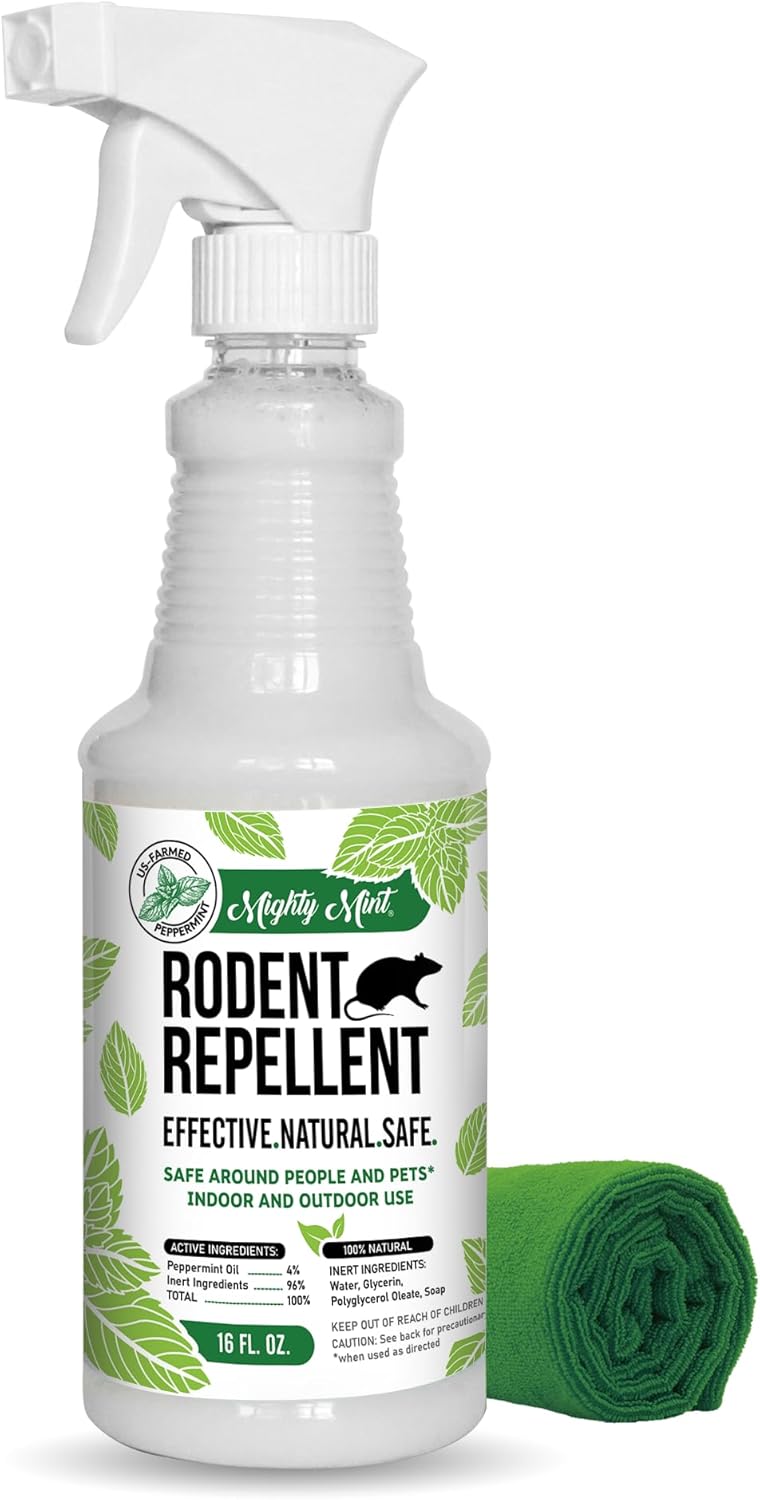Possum Control & Removal
Opossums are North America's only native marsupial and while they provide benefits like pest control and cleanup, they can become nuisances when they take up residence near homes. These nocturnal animals often seek shelter in buildings and can cause concerns through their scavenging habits. Understanding opossum behavior is key to implementing humane and effective control measures.
Recommended Products
Bonide MOLEMAX Repellent
A natural castor oil-based granular repellent that protects lawns and gardens from burrowing pests. This ready-to-use formula treats up to 5,000 square feet and provides up to three months of protection while remaining safe for plants.
- Natural Ingredients
- Extended Protection
- Wide Coverage
- Plant Safe
CritterTec Solar Mole Repellent Stakes
Humane solar-powered stakes that emit sonic waves and vibrations to deter burrowing pests from your yard. Each set covers up to 5000 sq.ft with eco-friendly, continuous protection for up to 7 days on a full charge.
- Solar Powered
- Wide Coverage
- Weather Resistant
- Pet-Safe Operation
Mighty Mint Peppermint Oil Rodent Repellent
This powerful natural rodent deterrent uses high-grade peppermint oil from the Pacific Northwest to effectively repel mice and rats. The extra-concentrated formula comes in a convenient 16oz spray bottle, offering a humane and pleasant-smelling solution to rodent problems.
- Premium Natural Formula
- Safe & Family-Friendly
- Highly Concentrated
⚠️ Health & Safety Risks
- Pet food contamination
- Garbage scatter
- Parasite transmission
- Den damage
- Garden destruction
🚨 When to Call a Professional
- Animals in structures
- Persistent problems
- Multiple possums
- Property damage
- Legal removal needs
🏥 Emergency Response
- Animal in house: Contact wildlife control
- Pet conflict: Contact vet
- Bite incident: Seek medical care
- Structural damage: Document issues
- Injured possum: Call wildlife rehab
🏡 DIY Removal Guides

Best Possum Repellents: Complete Guide to Humane Wildlife Control
Opossums (often called possums) are North America’s only native marsupial and generally beneficial wildlife that eat insects, rodents, and ticks.…
Read More →🦝 Related Pests
Often found with:
🔍 Signs of Activity
- Nocturnal noises
- Scattered garbage
- Pet food disturbance
- Garden damage
- Droppings present
🏠 Common Areas
- Under decks
- Crawl spaces
- Dense brush
- Attics
- Garages
Frequently Asked Questions
Are possums dangerous?
Opossums are generally docile and prefer to avoid confrontation. They may hiss or "play dead" when threatened but rarely attack unless cornered. They can carry parasites and diseases.
What attracts possums to my yard?
Pet food, garbage, compost, fallen fruit, garden produce, and secure shelter spots attract opossums. They're also drawn to areas with insects and rodents.
How do I keep possums away?
Secure food sources, remove shelter opportunities, install barriers under decks/porches, use motion-activated lights, and maintain yard cleanliness.
Do possums damage property?
While they can create den sites in structures and scatter garbage, opossums typically cause less damage than raccoons or other wildlife. They may damage gardens when feeding.
Will possums attack pets?
Opossums typically avoid confrontation with pets but may defend themselves if cornered. They rarely initiate aggression but can injure pets in self-defense.
Are possums beneficial?
Yes, opossums eat many pests including ticks, rats, mice, snails, and slugs. They also clean up carrion and fallen fruit, helping reduce disease vectors.
How do I remove a possum?
Professional removal is recommended. Exclusion methods, habitat modification, and preventing access to food and shelter are effective long-term solutions.
Do repellents work on possums?
Commercial repellents have limited effectiveness. Removing attractants and using exclusion methods provide more reliable results.
Will possums leave on their own?
Opossums are nomadic and may move on naturally if food and shelter are unavailable. However, new ones may move in if attractive conditions persist.
How long does control take?
Initial exclusion can be completed in 1-2 days, but establishing effective prevention may take several weeks of monitoring and maintaining deterrents.


